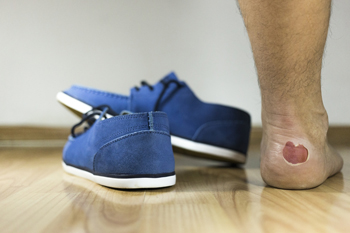
Foot blisters are a common issue for runners and are typically caused by friction that occurs when skin rubs against socks or shoes. Wearing running shoes that are too small or poorly fitted increases pressure and creates hot spots that lead to blister formation. Moisture from sweat softens the skin, making it more vulnerable to irritation. Certain foot conditions such as bunions, flat feet, or high arches can also change the way pressure is distributed, increasing the risk of blisters. To prevent them, runners should wear moisture-wicking socks, choose shoes that fit well, and consider using protective padding. A podiatrist can assess foot structure, identify problem areas, and provide personalized recommendations or custom orthotics to reduce friction and improve comfort during running. If you frequently develop foot blisters while running, it is suggested that you contact this type of doctor for safe treatment and additional prevention tips.
Blisters are prone to making everyday activities extremely uncomfortable. If your feet are hurting, contact Gregory Kranzusch, DPM of Foot and Ankle Center of St. Charles County. Our doctors can provide the care you need to keep you pain-free and on your feet.
Foot Blisters
Foot blisters develop as a result of constantly wearing tight or ill-fitting footwear. This happens due to the constant rubbing from the shoe, which can often lead to pain.
What Are Foot Blisters?
A foot blister is a small fluid-filled pocket that forms on the upper-most layer of the skin. Blisters are filled with clear fluid and can lead to blood drainage or pus if the area becomes infected.
How Do Blisters Form?
Blisters on the feet are often the result of constant friction of skin and material, usually by shoe rubbing. Walking in sandals, boots, or shoes that don’t fit properly for long periods of time can result in a blister. Having consistent foot moisture and humidity can easily lead to blister formation.
Prevention & Treatment
It is important to properly care for the affected area in order to prevent infection and ease the pain. Do not lance the blister and use a Band-Aid to provide pain relief. Also, be sure to keep your feet dry and wear proper fitting shoes. If you see blood or pus in a blister, seek assistance from a podiatrist.
If you have any questions, please feel free to contact our office located in St. Charles, MO . We offer the newest diagnostic and treatment technologies for all your foot care needs.
